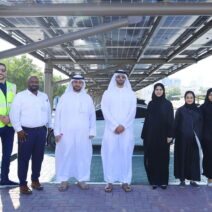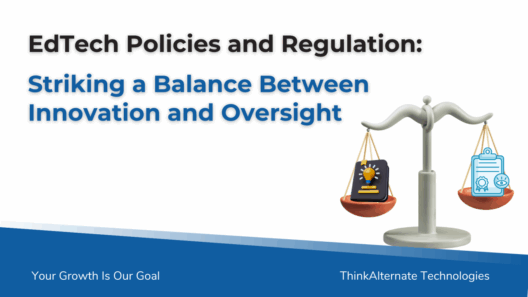Waste management is a crucial aspect of environmental sustainability, serving as a linchpin in the ongoing battle against climate change. Have you ever considered what happens to your trash after it’s discarded? Is it merely a burden for landfills, or does it hold the potential to be transformed into something beneficial? The concept of “Turning Trash into Treasure” encompasses various strategies for waste management, which not only mitigate environmental impact but also play a significant role in energy conservation.
The modern world faces an increasing challenge: how to manage growing volumes of waste while minimizing its ecological footprint. As populations grow and consumption escalates, waste generation has surged, leading to critical problems like overflowing landfills and pollution. This poses a playful yet pressing question: What if we could reclaim some of those discarded materials to produce energy, instead of letting them languish in anonymous heaps? This challenge underscores the vital significance of effective waste management systems.
At the core of waste management lies the concept of the waste hierarchy, which establishes a ranking of options for managing waste. The pyramid typically consists of five key strategies: prevention, minimization, reuse, recycling, and disposal. The most desirable approach is always to prevent the generation of waste in the first place, followed by efforts to reuse materials whenever possible. By minimizing waste, we decrease the volume of materials that require treatment, leading to substantial energy conservation.
Recycling is perhaps one of the most effective ways to manage waste sustainably. This process involves collecting, processing, and using recyclable materials to create new products. When recycling is done correctly, it can drastically reduce the consumption of raw materials and the amount of energy required to produce new products. For instance, recycling aluminum saves up to 95% of the energy required to produce aluminum from bauxite ore. Similarly, recycling paper can save significant amounts of water and energy, making it a strategic consideration in energy conservation efforts.
The transformation of waste into energy, often referred to as energy recovery, serves as an innovative answer to the challenges posed by waste disposal. Waste-to-energy facilities convert non-recyclable waste into usable heat, electricity, or fuel through a variety of processes, including combustion and anaerobic digestion. This not only helps divert waste from landfills but also generates energy that can contribute to a community’s energy needs. It creates a symbiotic relationship between waste management and energy production, showing that what was once seen as undesirable can be turned into a valuable asset.
A common misconception is that all waste can efficiently be transformed into energy. However, this brings forth a significant challenge. Not all waste streams are created equal; the efficiency of energy recovery processes depends heavily on the type of waste. Organic materials, for instance, yield high energy returns through anaerobic digestion, while electronic waste contains toxic materials that require specialized handling and processing methods. Thus, pursuing energy recovery must be approached thoughtfully, ensuring that health, safety, and environmental standards are upheld.
Innovative solutions have emerged in recent years to enhance waste management practices, and one of these is the concept of circular economy. This model emphasizes collaboration across industries and sectors to create a closed-loop system in which waste is continuously reused and repurposed. By rethinking production and consumption models, the circular economy extends the life cycle of products and reduces the need for virgin materials, ultimately leading to significant energy savings.
Composting is another fantastic example of turning waste into treasure that aligns with energy conservation objectives. Organic waste, such as food scraps and yard waste, can be composted to create nutrient-rich material for soil enhancement. This process not only captures carbon and decreases methane emissions from landfills but also reduces the energy needed for fertilizers and other soil amendments. Thus, composting stands as a solution to both waste management and energy efficiency.
Government policies play a pivotal role in shaping effective waste management strategies. Legislative frameworks can incentivize recycling and energy recovery systems while fostering community engagement in sustainability programs. Countries around the world are beginning to implement measures such as banning single-use plastics or providing tax breaks for businesses that adopt sustainable practices. Such initiatives create an atmosphere where waste management becomes a community-focused endeavor, engaging citizens and fostering a sense of responsibility towards waste generation and energy conservation.
However, the success of waste management and energy conservation strategies hinges on public participation. The challenge remains: how can we encourage individuals and businesses to embrace sustainable practices willingly? It is imperative to raise awareness about the ramifications of waste and the potential rewards of responsible management. Education campaigns, community workshops, and social media initiatives can ignite interest and stimulate action. People need to recognize that their choices matter; whether it is recycling diligently, composting, or supporting local waste-to-energy projects, every action contributes to the larger goal of a sustainable future.
In conclusion, waste management plays an indispensable role in energy conservation, epitomized by the philosophy of “Turning Trash into Treasure.” By thoughtfully addressing the various stages of waste management—from prevention to recycling and energy recovery—we can mitigate environmental harm, reduce energy consumption, and improve the quality of life for future generations. The transformative potential of waste lies not just in its removal but in its reinvention, where it serves as a resource rather than a burden. As societies grapple with the consequences of consumption, innovative waste management strategies offer pathways toward a more sustainable and energy-efficient world.







